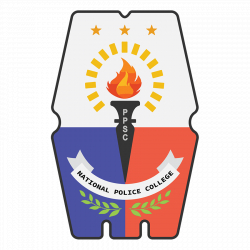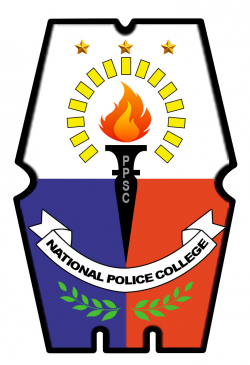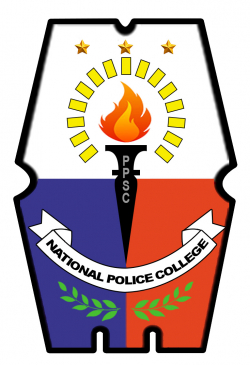A CASE STUDY OF DAVAO CITY 911 EMERGENCY RESPONSE SYSTEM _ BASIS FOR PROGRAM REPLICATION

Type
Thesis
Authors
Category
PSOSEC
[ Browse Items ]
Publication Year
2016
Publisher
PPSC - NPC, Philippines
Tags
Abstract
Abstract
The study determined the effectiveness of Davao City 911 during the last quarter of 2016. Findings served as basis for a proposed action plan. It measured the level of effectiveness in the following areas: design, mechanism, process, and inter-agency collaboration and coordination as well as the challenges encountered in the management and operation of the Davao City Central 911.
The researcher used the mixed method type, the quantitative-qualitative combination. The collection of data included the use of survey questionnaire, focus-group discussion (FGD), and key informant interview (KII). Mixed method was used for conducting researchers that involved collecting, analyzing, and integrating quantitative and qualitative research in a single study or a longitudinal program of inquiry.
The researcher used the descriptive design. The descriptive design answered the what, where, and who in the study. In the study, it was the level of effectiveness of the Davao City 911 in the areas of design, mechanism, process, and inter-agency collaboration. It also answered the perceived problems in the implementation and operation of Davao City 911.
The study was done at Davao City Central 911 during the last quarter of 2016 among the 400 respondents from the local government units, government, private, and academic institutions. The researcher used frequency and percentage and mean as its data treatments.
The level of effectiveness of the Davao City Central 911 Emergency Response System has an overall mean of 3.98, which is rated effective.
The design of the Central 911 Emergency Response System has a grand mean of 3.97, which is effective. The highest indicator shows that the Davao City Central 911 Emergency Response System follows the same standards based on US and Canada’s 911 systems having a mean of 4.00, which is effective. The lowest indicator shows that there is a regular updating of the manual to ensure that the procedures for control are followed with a mean score of 3.93, which is also effective.
The mechanism of the Davao City Central 911 Emergency Response System in terms of mechanism has a grand mean of 3.97, which is effective. The highest indicator shows that Central 911 Emergency Response System has up-to-date equipment necessary for saving lives (X=4.01), which is rated effective. The lowest indicator shows that there are extensive training programs for the central 911 Emergency Response System personnel (X=3.92), which is rated effective.
The process of the Central 911 Emergency Response System has a grand mean of 3.98, which is effective. The highest indicator shows that the Central 911 Emergency Response System communications are handled effectively (X=4.04). The lowest indicator shows that the Central 911 arrives on time (X=3.91), which is rated effective. The level of effectiveness in terms of inter-agency collaboration and coordination has a grand mean of 3.99, which is rated effective. There is a continual support from the different agencies, local government units, private sectors, academe, the national and international communities.
The inter-agency collaboration has a grand mean of 3.99, which is effective. The highest indicator shows that there is continual support from the different sectors of the City Government of Davao (X=4.02), which is rated effective. The lowest indicator shows the communication centers are supported by big network companies for free (X=3.92), which is also effective.
In terms of the management and operation of the Davao City Central 911 Emergency Response System, one of the challenges is the absence of the operating manual. Despite its absence, the five components (i.e., police, EMS, USARY, K-9, and fire auxiliaries) operate using the basic structure of Public Safety Answering Point (PSAP). It acts as the coordinating and operating structure by referring to the 911 organizational structures. There is no specific operating manual pertaining to the methodology in the protocol on specific response for EMS, etc. One of the examples is when calling dispatch, there is no existing manual; it is just a simple dispatch operation. It is patterned on the concept of PATROL 117 as an answer point or PSAP. Right now, the Central 911 is still working with the E911, and the 911 manual is still for further enhancements.
One of the problems encountered was the dynamic growth of the Central 911. Mr. Jaldon said that it did not start perfectly as expected. It has grown but with interventions. The protocols have changed2. Before, it was PSAP; now it is E911, or the electronic 911. At present, protocols were developed for the EMS, the new medical service, which is 911’s own EMS. The Central 911’s challenge pertaining to the manual is that it cannot upgrade right away because of the hundreds of manuals that are presently used by the different local government units. Every time Mr, Jaldon suggests for an update, other manuals are also levelling up.
The study determined the effectiveness of Davao City 911 during the last quarter of 2016. Findings served as basis for a proposed action plan. It measured the level of effectiveness in the following areas: design, mechanism, process, and inter-agency collaboration and coordination as well as the challenges encountered in the management and operation of the Davao City Central 911.
The researcher used the mixed method type, the quantitative-qualitative combination. The collection of data included the use of survey questionnaire, focus-group discussion (FGD), and key informant interview (KII). Mixed method was used for conducting researchers that involved collecting, analyzing, and integrating quantitative and qualitative research in a single study or a longitudinal program of inquiry.
The researcher used the descriptive design. The descriptive design answered the what, where, and who in the study. In the study, it was the level of effectiveness of the Davao City 911 in the areas of design, mechanism, process, and inter-agency collaboration. It also answered the perceived problems in the implementation and operation of Davao City 911.
The study was done at Davao City Central 911 during the last quarter of 2016 among the 400 respondents from the local government units, government, private, and academic institutions. The researcher used frequency and percentage and mean as its data treatments.
The level of effectiveness of the Davao City Central 911 Emergency Response System has an overall mean of 3.98, which is rated effective.
The design of the Central 911 Emergency Response System has a grand mean of 3.97, which is effective. The highest indicator shows that the Davao City Central 911 Emergency Response System follows the same standards based on US and Canada’s 911 systems having a mean of 4.00, which is effective. The lowest indicator shows that there is a regular updating of the manual to ensure that the procedures for control are followed with a mean score of 3.93, which is also effective.
The mechanism of the Davao City Central 911 Emergency Response System in terms of mechanism has a grand mean of 3.97, which is effective. The highest indicator shows that Central 911 Emergency Response System has up-to-date equipment necessary for saving lives (X=4.01), which is rated effective. The lowest indicator shows that there are extensive training programs for the central 911 Emergency Response System personnel (X=3.92), which is rated effective.
The process of the Central 911 Emergency Response System has a grand mean of 3.98, which is effective. The highest indicator shows that the Central 911 Emergency Response System communications are handled effectively (X=4.04). The lowest indicator shows that the Central 911 arrives on time (X=3.91), which is rated effective. The level of effectiveness in terms of inter-agency collaboration and coordination has a grand mean of 3.99, which is rated effective. There is a continual support from the different agencies, local government units, private sectors, academe, the national and international communities.
The inter-agency collaboration has a grand mean of 3.99, which is effective. The highest indicator shows that there is continual support from the different sectors of the City Government of Davao (X=4.02), which is rated effective. The lowest indicator shows the communication centers are supported by big network companies for free (X=3.92), which is also effective.
In terms of the management and operation of the Davao City Central 911 Emergency Response System, one of the challenges is the absence of the operating manual. Despite its absence, the five components (i.e., police, EMS, USARY, K-9, and fire auxiliaries) operate using the basic structure of Public Safety Answering Point (PSAP). It acts as the coordinating and operating structure by referring to the 911 organizational structures. There is no specific operating manual pertaining to the methodology in the protocol on specific response for EMS, etc. One of the examples is when calling dispatch, there is no existing manual; it is just a simple dispatch operation. It is patterned on the concept of PATROL 117 as an answer point or PSAP. Right now, the Central 911 is still working with the E911, and the 911 manual is still for further enhancements.
One of the problems encountered was the dynamic growth of the Central 911. Mr. Jaldon said that it did not start perfectly as expected. It has grown but with interventions. The protocols have changed2. Before, it was PSAP; now it is E911, or the electronic 911. At present, protocols were developed for the EMS, the new medical service, which is 911’s own EMS. The Central 911’s challenge pertaining to the manual is that it cannot upgrade right away because of the hundreds of manuals that are presently used by the different local government units. Every time Mr, Jaldon suggests for an update, other manuals are also levelling up.
Number of Copies
1
| Library | Accession No | Call No | Copy No | Edition | Location | Availability |
|---|---|---|---|---|---|---|
| NPC Library | 676060 | 1 | Yes |




